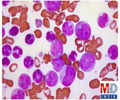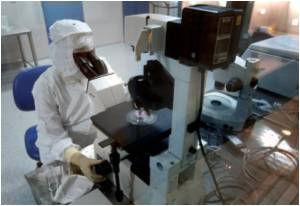Scientists have identified why a particular cancer drug is so effective at killing cells.

It is widely used in the treatment of B cell malignancies, such as lymphoma and leukaemia - as well as in autoimmune diseases like rheumatoid arthritis.
Using high-powered laser-based microscopes, researchers made videos of the process by which rituximab binds to a diseased cell and then attracts white blood cells known as natural killer (NK) cells to attack.
They discovered that rituximab tended to stick to one side of the cancer cell, forming a cap and drawing a number of proteins over to that side. It effectively created a front and back to the cell - with a cluster of protein molecules massed on one side.
But what surprised the scientists most was how this changed the effectiveness of natural killer cells in destroying these diseased cells. When the NK cell latched onto the rituximab cap on the B cell, it had an 80 percent success rate at killing the cell. In contrast, when the B cell lacked this cluster of proteins on one side, it was killed only 40 percent of the time.
"These results were really unexpected. It was only possible for us to unravel the mystery of why this drug was so effective, through the use of video microscopy. By watching what happened within the cells we could clearly identify just why rituximab is such an effective drug - because it tended to reorganise the cancerous cell and make it especially prone to being killed," Professor Davis said.
Advertisement
The findings from this study have been published online on the website of the journal Blood.
Advertisement














